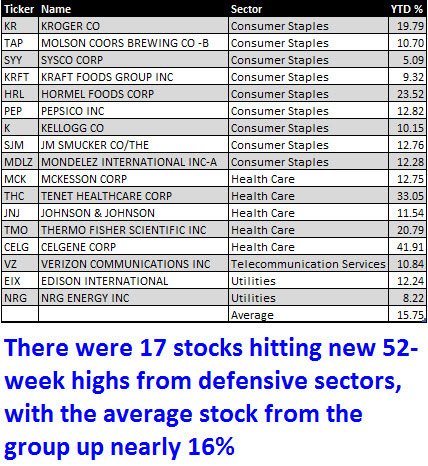Stocks breached record new highs this week as the Dow Jones Industrial Average joined a burgeoning group of indexes hitting new all-time highs with the S&P 500 just a stone’s throw away from joining the group. Stocks were helped this week by strong economic releases as well as central banks across the globe that remain steadfast in supporting risk assets. While stocks continue to display impressive strength, there are signs of selectivity that, if continued, may indicate our first intermediate correction coming up, stronger than the short 3% pullback we saw late in last month.
Economic Data Continues to Lift Stocks
On Monday we saw the ISM New York Index come in at 58.8 for February, an increase over the prior number of 56.7. Then, on Tuesday, we were treated to the release of the ISM Non-Manufacturing Composite which came in at 56.0, higher than the prior month’s 55.2 reading and above consensus. The index suggests the service sector of the economy continues to remain in expansionary mode (>50).
Yesterday we saw initial jobless claims fall from 344K the week prior to 340K, well below the consensus call for 355K. Given jobless claims are an excellent coincident indicator with the stock market, the new low in jobless claims is supportive of new highs in the stock market. The big report of the week came today with the release of the February’s jobs data with the change in nonfarm payrolls coming in at 236K, well above January’s revised 119K and ahead of the consensus calling for 165K jobs created during the month.
All in all it was a strong week for economic reports and with a continued pledge by the ECB, BOE, and BOJ to keep monetary policy accommodative, it was not surprising to see stocks rally.
Broad Based Strength
The markets hit new 52-week highs today with 95 new highs seen by S&P 500 members. Of those new highs seen in the S&P 500, 78 came from cyclical sectors which is bullish as opposed to a market being led higher by defensive sectors. Of those cyclical stocks hitting new highs within the S&P 500 today, the average stock is up nearly 18% year to date.
Defensive sectors are participating in this rally as well with the average defensive stock that hit a 52-week high this year up just under 16%.
Slight Caution: Market Selectivity
While this rally is seeing widespread participation with every sector having members hit new 52-week highs, as opposed to one or a few sectors leading the market higher, we are seeing a bit of selectivity as was seen prior to the October-November 2012 correction. Despite the market heading to new highs we have fewer stocks above their short-term 20-day moving average as well as fewer stocks above their intermediate-term 50-day moving average (see middle panel below). At the same time, we are also seeing weakening momentum as fewer and fewer stocks within the S&P 500 have RSI readings north of the bullish 70 zone (third panel below). This was also the backdrop prior to the October-November correction and if these negative divergences and deteriorating breadth continue we may finally see our first intermediate correction in the market.
DEFCON-5: No Sign of a Recession
Because the market’s intermediate-term and long-term momentum and breadth remain strong, if we do get an intermediate correction we may possibly see new highs as we aren’t seeing any of the major warning signs of an impending bull market top. Not only do we not have any major warnings signs from the stock market of a coming bear market, we also do not have any warning signs of a coming recession as seen by RecessionAlert.com’s extremely accurate “Recession Forecasting Ensemble,” which is a model of models that measures the probability of a recession. As you can see in the chart below, Recession Alert is currently in the DEFCON-5 stage, the lowest possible reading, reflecting broad based expansion among the 9 major financial and economic indicators it tracks.

Source: Recessionalert.com
All of the RecessionAlert.com’s models suggest the U.S. economy is in expansion mode and until the economy weakens and the stock market’s long-term internals deteriorate, any correction that ensues in the weeks and months ahead will likely be followed by new highs.









